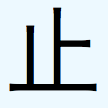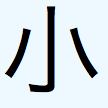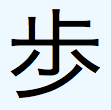What Is A Kanji Radical?
“You got to be careful if you don’t know where you’re going, because you might not get there.” – Yogi Berra
We’ve been talking about kanji radicals quite a bit up until now, but we haven’t really clearly established what a kanji radical is.
First off, think of it this way:
Kanji radicals are like the A-B-C’s of kanji. They’re like the “letters” that make up our “words.” For example, the letters K-A-N-J-I are put together to make the word “kanji.”
When you write the word “kanji,” you don’t think of it as being made up of individual strokes, lines, and dots, right? That would be way too hard. Instead, you learned 26 letters of the alphabet, and are able to put them together to form bigger words.
Kanji radicals are a lot like that. They’re smaller pieces that you learn and then put together to form a kanji. Most Japanese textbooks or resources will have you put together kanji using strokes – and I think you can already see why that way is so much harder. Remembering strokes (sometimes 15+ of them!) is really tough, and forces you to try to remember so much more. You can avoid that stress (and time… sooo much time) just by learning your radicals first (yet almost nobody seems to do this).
Let’s look at an example. Think about this kanji as a put-together puzzle. We’ll be breaking it up into its puzzle pieces in a moment.
This is the kanji for “walk.” To the untrained eye (yes! We will be training your eyes!), this just looks like eight strokes of kanji madness (and eight strokes isn’t even all that bad). Go ahead and look at this kanji for 3 seconds then look away and try to replicate it. Hard, right? With radicals, you’d have been able to look at and memorize this kanji very, very quickly.
I don’t expect you to be able to do this on your own yet (we’ll be practicing this a lot, soon), but here’s how you could break this kanji up into three simpler pieces. Instead of remembering eight different strokes, you’re remembering three pieces, because you’re using radicals.



These three symbols are simpler radicals. When put together, they form the above kanji. The idea is that you’ll learn these radicals, and then when you start learning kanji, you’ll be able to use them to remember your kanji faster than you ever thought possible… faster than other Japanese learners and even faster than native Japanese people.
Instead of trying to memorize eight separate steps (one for each stroke), you only have to remember three. That’s 266% simpler than the traditional method, and you’re getting better results, as well. This method caters to the long-term memory so much better.

